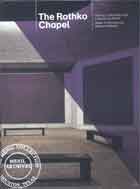
The Silence of Mark Rothko 2014
Distributed by Icarus Films, 32 Court St., 21st Floor, Brooklyn, NY 11201; 800-876-1710
Produced by Marjoleine Boonstra Foto & Film
Directed by Marjoleine Boonstra
DVD , color, 52 min.
High School - General Adult
Art
Date Entered: 10/05/2016
Reviewed by Marsha Taichman, Cornell UniversityThe Silence of Mark Rothko is slow and quiet throughout, with footage of Rothko’s biographer and dealers. The film is mainly narrated by Rothko’s son, Christopher, who reads entries from his father’s journals in a measured voice. Rothko is framed as a philosopher and an artist. The film is full of highly quotable musings from Rothko, including, “The struggle is beyond painting, not with painting,” and, “Silence is so accurate.”
The film is subtle, but perhaps too subtle. The challenge with this atmospheric, and, at times, moving film, is that there is not a lot of content or context. Nor is sufficient time spent with Rothko’s actual works. This is not to say that a detailed biographical look at the artist was expected or necessary, but it would be good to get a sense of the evolution of his work. One particularly lovely moment in the film is when Christopher reads his father’s breakdown of the necessary components to make a work of art. Included is a preoccupation with death, sensuality, tension and both wit and play (for a human element).
Perhaps the most powerful moment in the film is seemingly unrelated to Rothko himself. There is an interlude which includes an interaction between the crew and a man who sits outside Rothko’s former studio. It seemed like this man spent time on that stoop. The man is asked, “What is the sadness of life?” This is the kind of question Rothko would dwell on. The man discusses the loss of his family and how he was abandoned by his parents. Does this relate to Rothko’s empathy for others? His perceived aloneness? I wondered if I am missing the point of this narrative and how it was supposed to connect to the rest of the film.
New York City is very much a character in the film, and light is featured heavily, as it is in Rothko’s paintings. The camera lingers on objects and the sweeping shots of the city suggest his color field paintings. It is beautiful to watch.